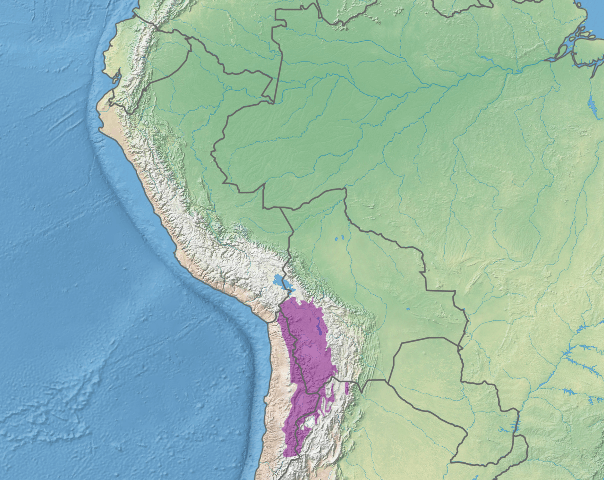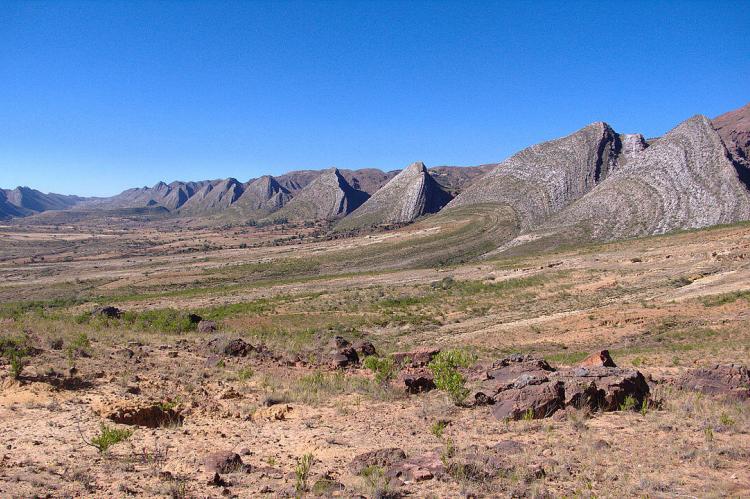Central Andean Dry Puna: An Arid Haven in the High Andes
The Central Andean Dry Puna in the high southern Andes of Bolivia, Chile, and Argentina features arid landscapes, salt flats, and ancient sea remnants. Unique vegetation adapted to extreme conditions and diverse fauna, from Andean camelids to elusive predators, thrive in this high-elevation ecoregion.
Central Andean Dry Puna
An Arid Haven in the High Andes
The Central Andean dry puna ecoregion, an arid haven in the high southern Andes, unfolds across western Bolivia, northern Chile, and Argentina. Stretching through the departments of La Paz, Oruro, and Potosi in Bolivia, provinces of Jujuy, Salta, Catamarca, and La Rioja in Argentina, and provinces of Tarapaca, Antofagasta, and Atacama in Chile, this unique ecoregion graces the Andean Cordillera Occidental with its presence.
Landscapes of Contrasts
Situated in the southern part of the Andean Cordillera Occidental, the ecoregion is a visual spectacle, boasting snow-capped peaks, volcanoes, salt flats, lagoons, and high plateaus. A testimony to its geological history, remnants of an ancient inland sea manifest as salt flats or salars, including Coipasa, Uyuni, Chalviri, Atacama, and Arizaro.
Echoes of the Past: An Ancient Inland Sea
The arid landscapes of the Central Andean dry puna preserve the memory of an extensive inland sea, with salt flats bearing witness to this geological tale. Coipasa, Uyuni, Chalviri, Atacama, and Arizaro salars are remnants of a bygone era, inviting exploration into the region's prehistoric narrative.
Vegetation Symphony: Adapting to Extreme Conditions
Distinguished by extreme temperatures and altitudes, the ecoregion hosts a unique vegetation symphony. Polylepis forests, the sole arborescent genus naturally thriving at high elevations, grace the landscape. Tropical alpine herbs and dwarf shrubs create a botanical mosaic between 3,500 meters (11,483 feet) and permanent snow lines. Floating submerged plants, or cushion bogs, dominate the vegetation above 4,000 meters (13,000 feet). A transition from dry-adapted shrubs like Adesmia and Senecio to grassy steppes with Calamogrostis and Stipa grasses unfolds from east to west.
Fauna Marvels: Surviving in Arid Realms
The fauna of the Central Andean dry puna is a testament to adaptation. Various Andean camelids roam these arid realms, including the vicuña, while elusive predators like the puma and Andean cat navigate the challenging terrain. Unique birds, such as the Cochabamba mountain finch and Maquis canisters, find refuge in the Polylepis and scrub forests. Endemic amphibians like Telmatobius huayra and unique reptiles, including recently discovered Liolaemus species in the Eduardo Avaroa Reserve, add to the ecological richness.
Conservation Challenges: A Delicate Balance
The ecoregion's delicate balance has faced centuries of impact from livestock grazing, burning, firewood collection, and clearance for cultivation. In response, protected areas within this realm, designated as wildlife reserves, emerge as crucial havens for conservation. These areas stand as guardians, tasked with preserving the arid splendor of the Central Andean dry puna, ensuring the endurance of its unique ecosystems for generations to come.

Map depicting the location of the Central Andean dry puna ecoregion (in purple).
